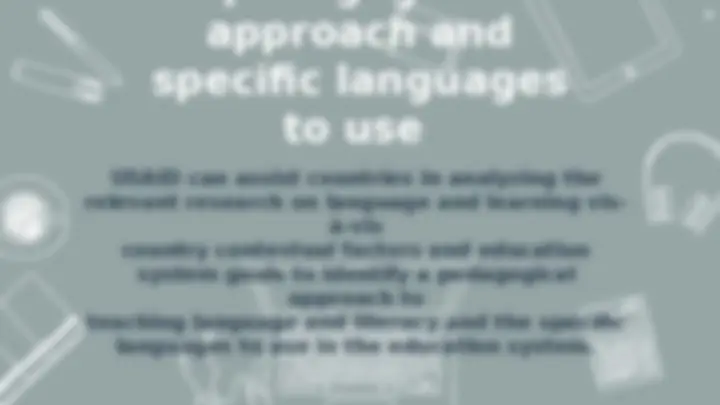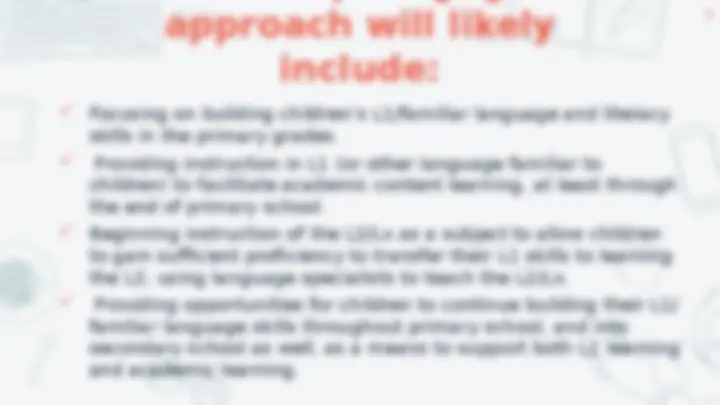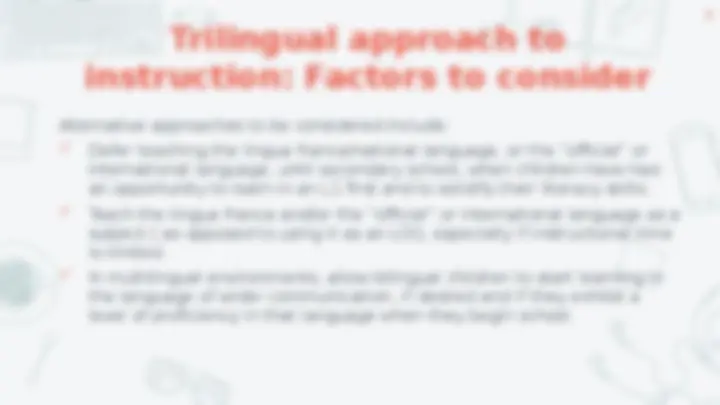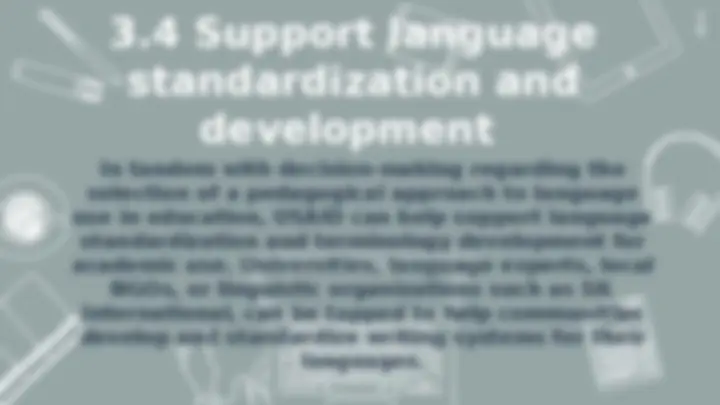








Study with the several resources on Docsity

Earn points by helping other students or get them with a premium plan


Prepare for your exams
Study with the several resources on Docsity

Earn points to download
Earn points by helping other students or get them with a premium plan
Community
Ask the community for help and clear up your study doubts
Discover the best universities in your country according to Docsity users
Free resources
Download our free guides on studying techniques, anxiety management strategies, and thesis advice from Docsity tutors
Guidance for education systems on identifying pedagogical approaches and specific languages to use for effective language instruction. It discusses the benefits of a trilingual approach, the importance of language standardization and development, and factors to consider when making decisions. USAID can assist in analyzing research and contextual factors to help make informed decisions.
What you will learn
Typology: Assignments
1 / 12

This page cannot be seen from the preview
Don't miss anything!







WE ARE WEEK 14 PRESENTER. HELLO! Wenzel Felipe Jenemie Lovete Jennifer Venus Maribeth Yambao
approach and specific languages to use
7
(^) Experience from countries like Ghana, Papua New Guinea, and Ethiopia suggests that providing instruction in multiple languages within one country is feasible if efforts are well-planned (^) If it is not possible due to time, logistical, or other resource constraints to teach all children in L1, an L2/Lx that is closely related to their L1 and/or one that is spoken widely in the larger community may be the best alternative. (^) However, as previously noted, additional languages may be phased in over time as materials are developed and teacher training and placement eventually match language-specific instructional needs (^) Stakeholders should also be engaged in identifying regions or communities of high need, and in setting initial priorities. (^) To avoid problems in identifying languages to include as an LOI, it is important is that the decision- making process be made as transparent as possible, with clear criteria for selecting and prioritizing languages to use in specific communities (^) All stakeholders should be consulted to ensure that political factors do not unfairly sway decisions.
3.4 Support language standardization and development
0